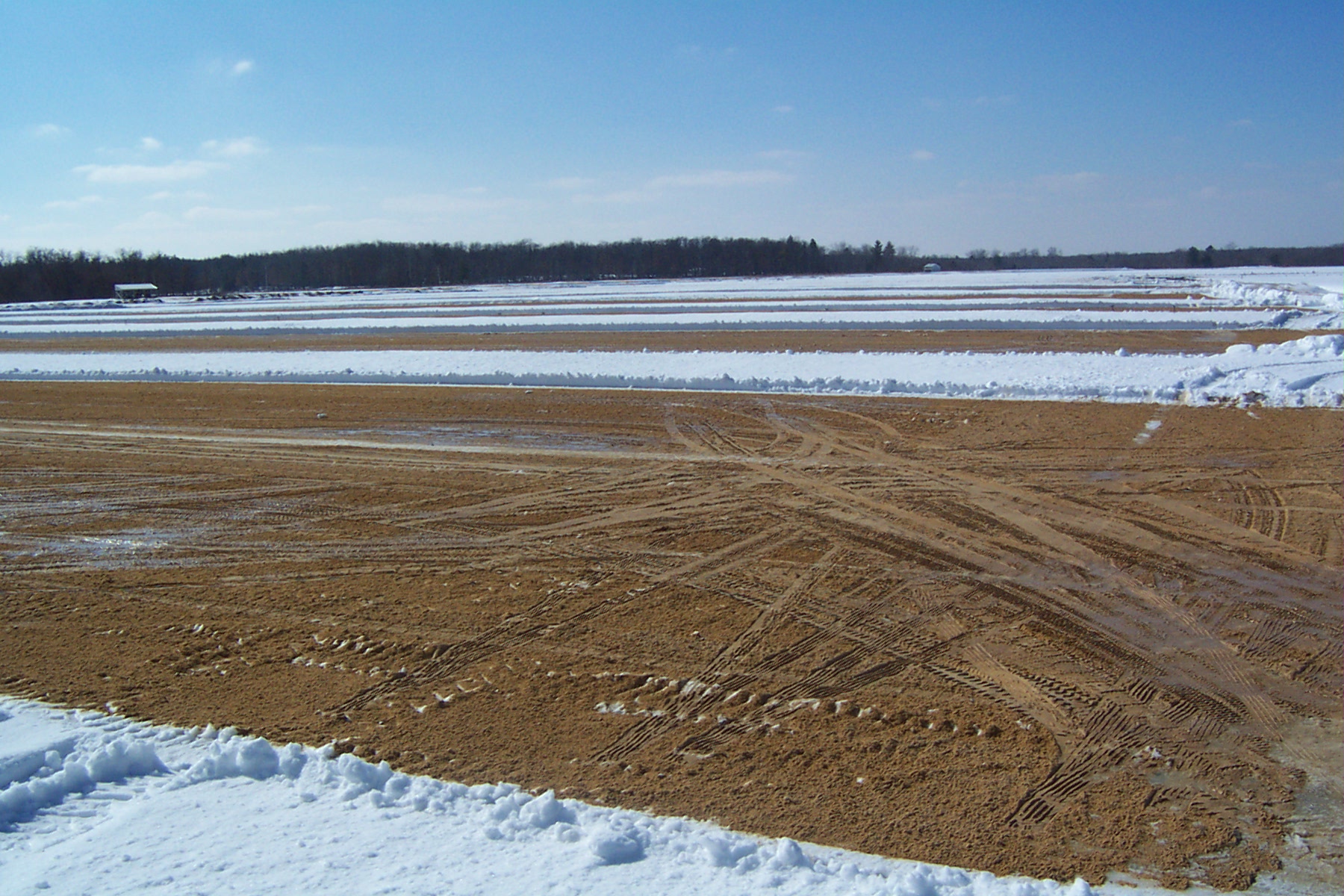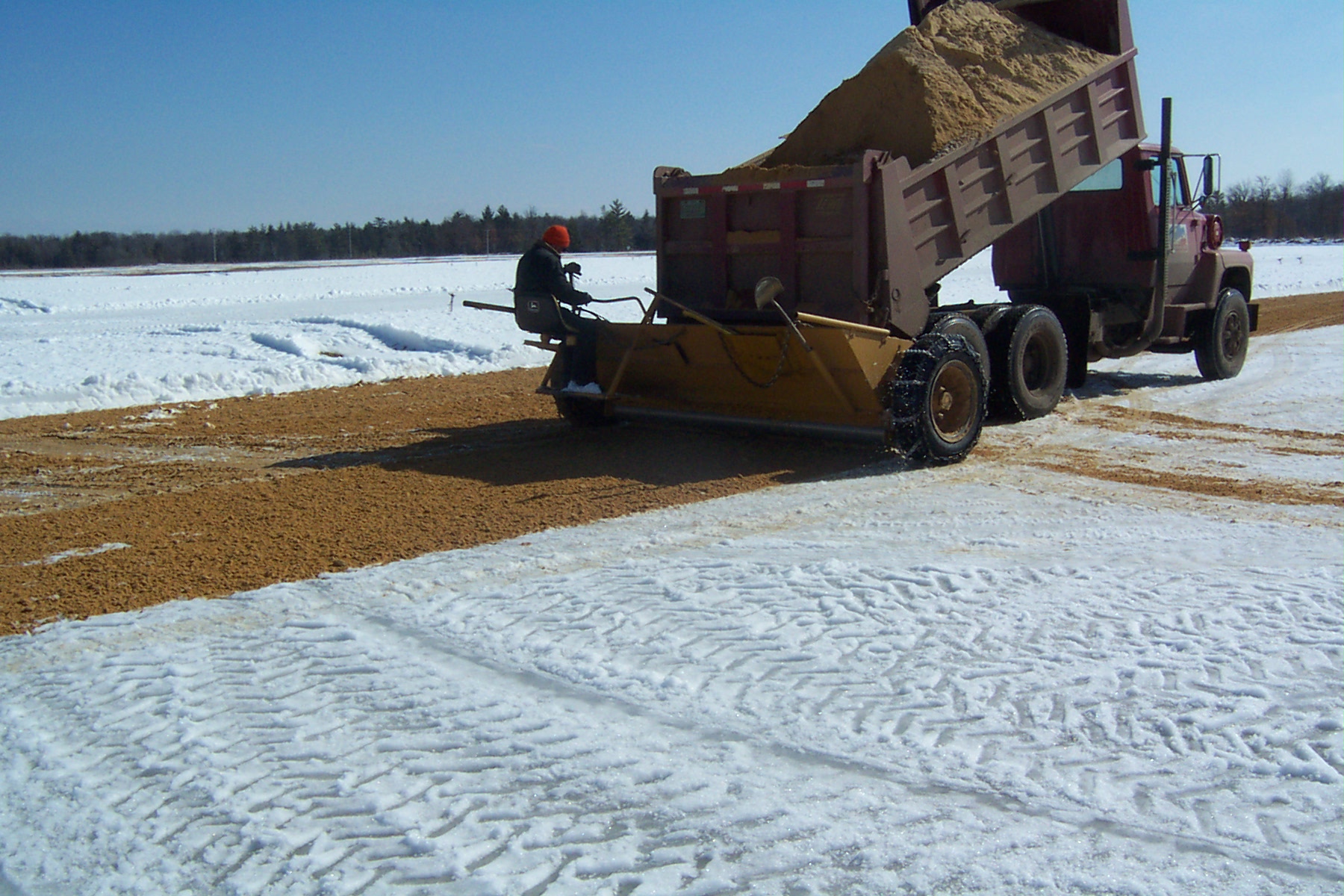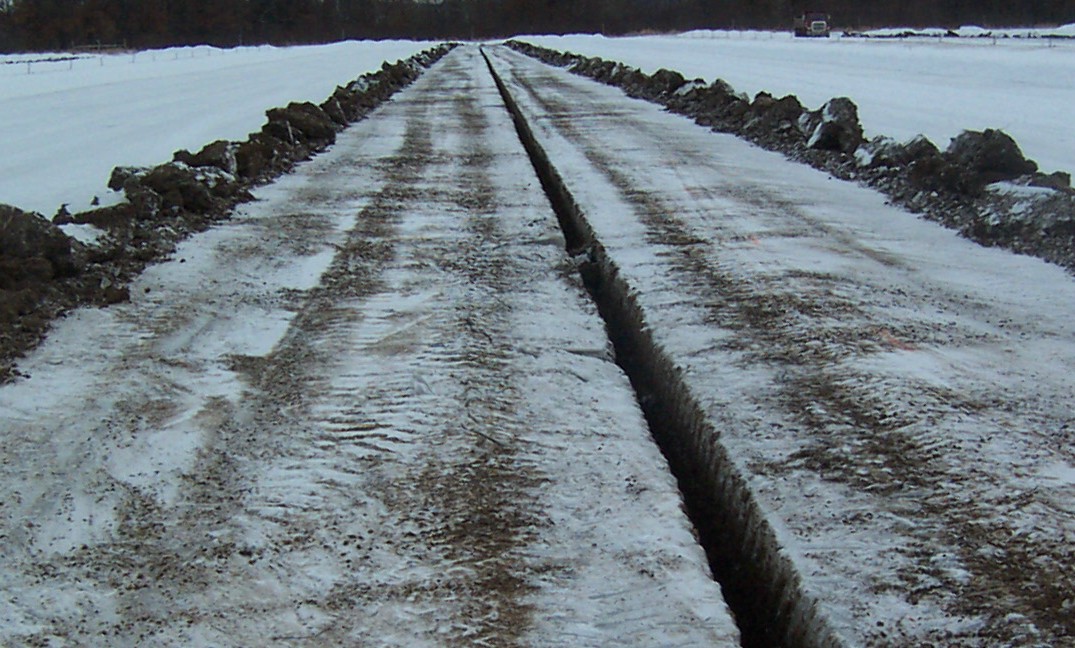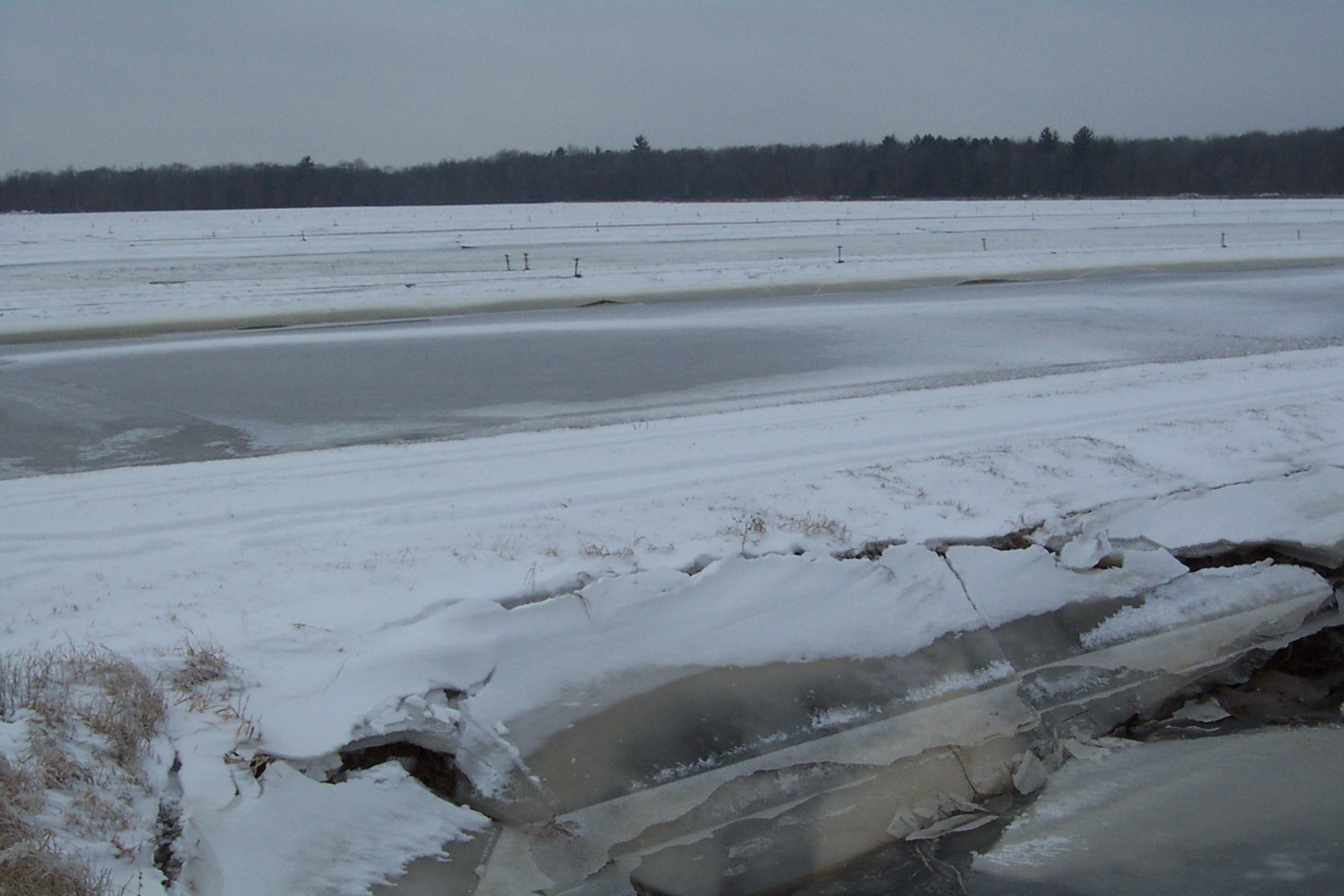|
|
|
|
 |
 |
|
|
Sanding is a cultural practice that is done periodically to promote growth of the cranberry vines. Every three to five years, a layer of sand is applied on top of the ice in the winter. When the ice melts in the spring, the sand trickles down and covers up any leaf debris that may be covering up the cranberry vines. The sand also covers up some of the runner vines, which stimulates the plant to produce more upright shoots, the fruit-bearing part of the plant.
|
|
|
|
|
 |
 |
|
|
Sand is taken from large stockpiles and screened to remove rocks and other frozen chunks, as seen in the photo at the left. Once the sand has been screened, it is loaded into dump trucks and taken to the beds, as shown below.
|
|
|
 |
 |
|
|
The two photos below show the sand being spread onto the beds. A sander attaches to the back of the dump truck and spreads the sand in an even layer over the ice. The person riding on the sander makes sure the sand spreads evenly and controls how thick the sand gets spread on the ice.
|
|
|
|
 |
 |
|
|
In these photos, a trencher is being used to dig a small ditch down the center of some of our cranberry beds. The trencher digs through the ice and removes the vines and dirt, leaving a small ditch down the center of the bed. Then, using machinery, the dirt that was dug up is pushed away from the ditch and loaded into dump trucks.
|
|
|
|
 |
 |
|
|
This is being done to improve drainage on some of the beds where water does not drain well during the growing season. If there is poor drainage, the cranberry vines will become stressed and will not produce as many berries. Performing this activity during the winter allows us to operate out on the ice without damaging the cranberry vines underneath.
|
|
 |
 |
|
|
After the cranberries are harvested in the fall, the vines go dormant for the winter. When the temperatures drop well below freezing for several days in a row, the beds are flooded with water and a layer of ice forms over the vines to protect them from the harsh Wisconsin winters. Depending on how cold it gets and how long the cold temperatures last, this process may be repeated to form a thick layer of ice. The desired ice thickness is usually at least 12 inches. This photo shows what the beds look like once the ice has formed.
|
|
 |
 |
|
|
Once the first layer of ice has formed, the ice needs to be chipped away from the end of each bed to allow the water that did not freeze to flow out of the bed. This photo shows how the ice is chipped away from the bulkheads.
|
|
|
|
|



